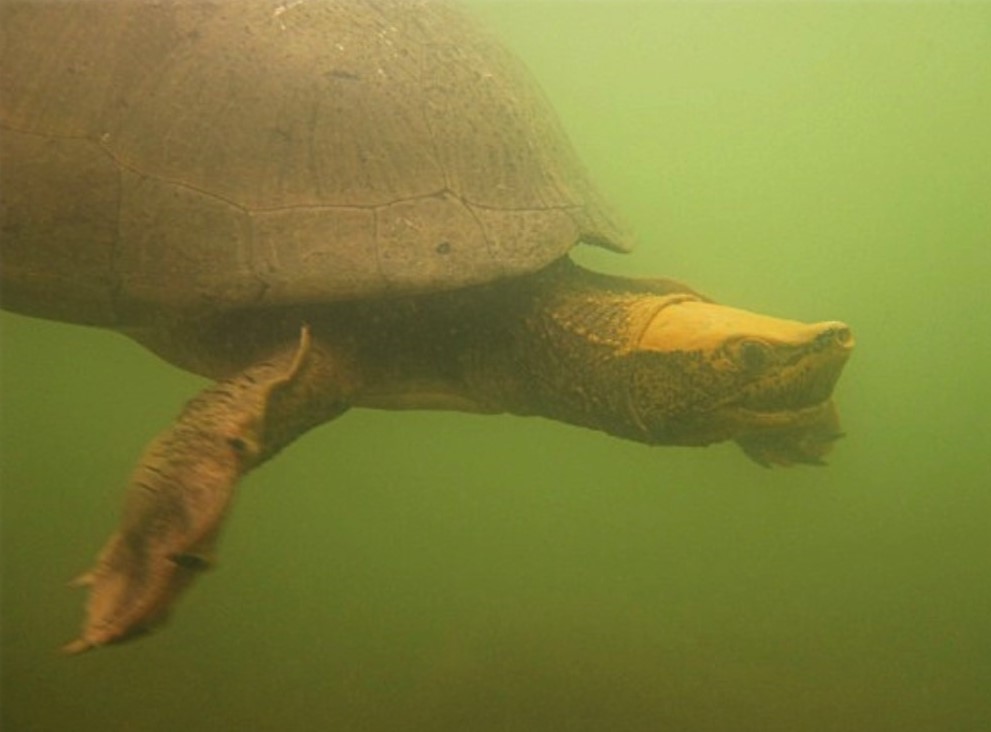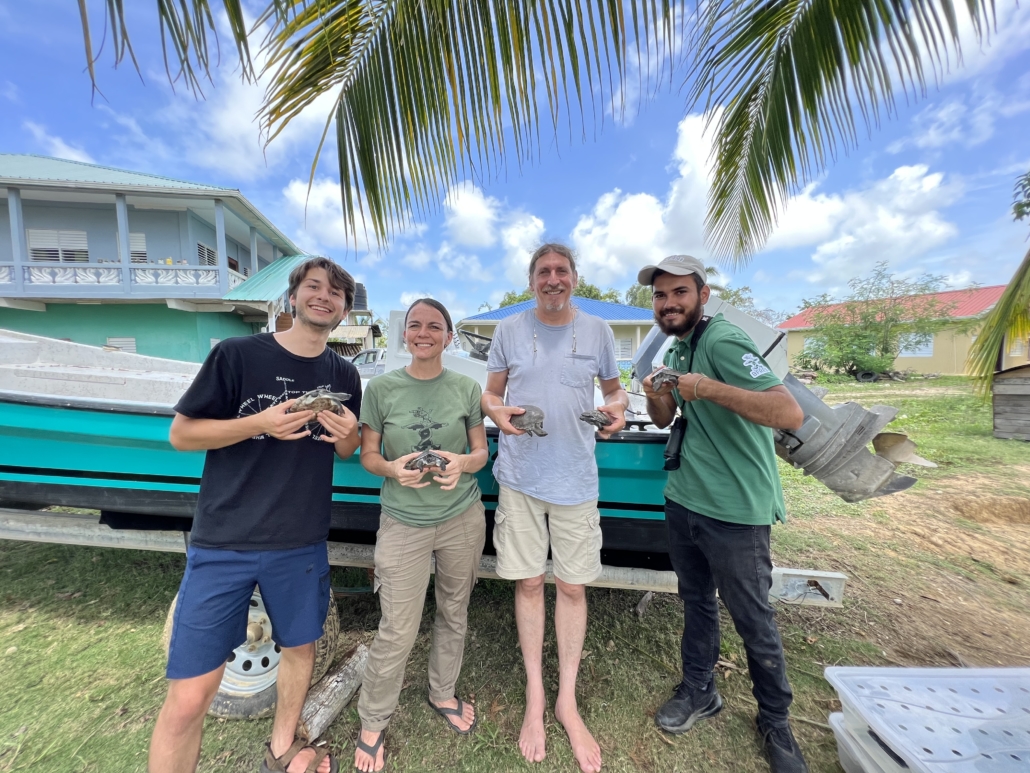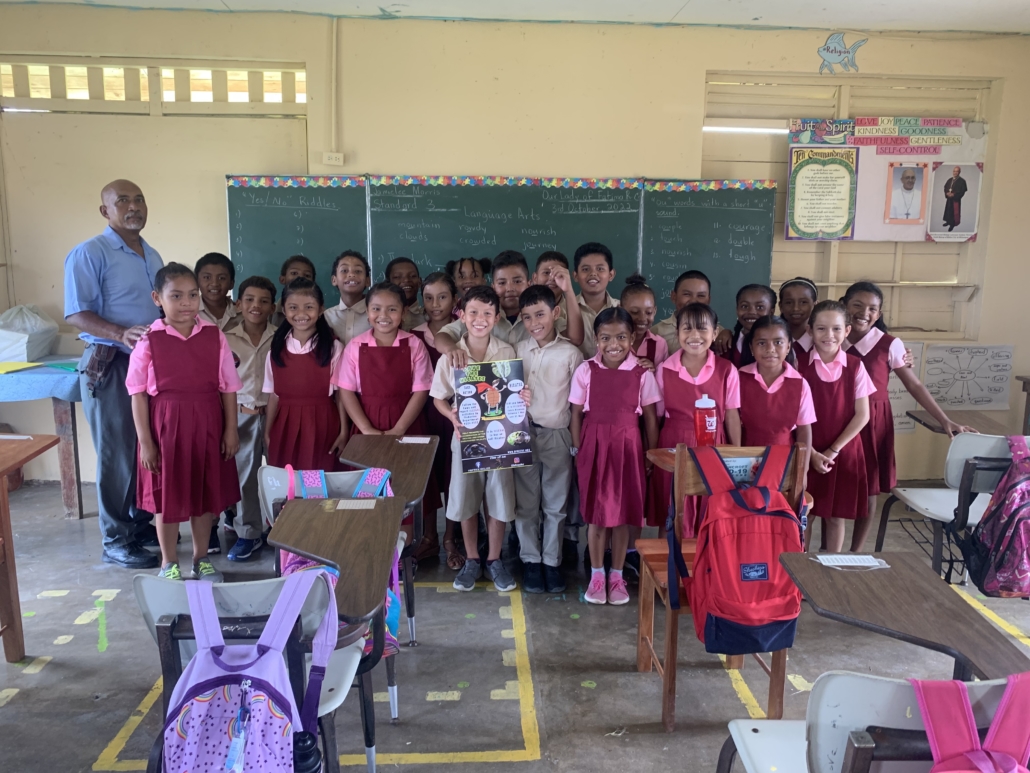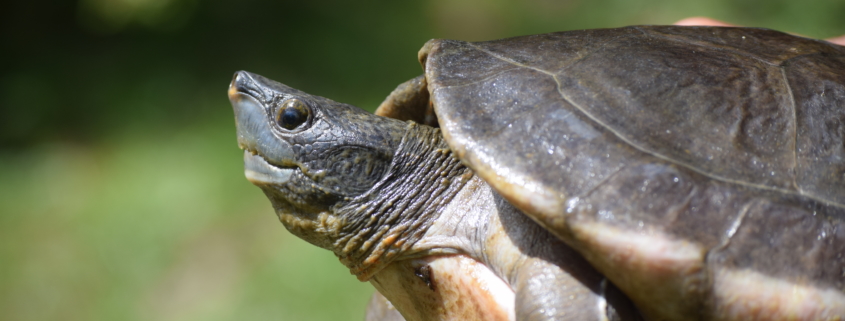Finding Hope Amidst the Loss
A memory that is deeply lodged inside my brain – me, at the age of ten, navigating a trail behind my house winding through the lush broadleaf forests to the purpose of my being, the Belize River. A river that is deep and wide, created by two rivers colliding into one another. My heart pounds like a piston on a super truck climbing up a hill as I reach the cliff’s edge and peer over because I’m able to see schools of fish that are not scared off by my human presence. This was a time when I felt most connected to nature because the animals I witnessed didn’t seem traumatised by their contact with people.
As a child, I was constantly fishing. I was also always observant – and when boats filled with fishermen were coming near – I quickly hid. I clearly remember one group of fishermen in a fancy John boat. They had an odd way of fishing by using ropes. Two men would shake the ropes as if they’ve hooked a giant fish and needed help from the others who would then jump in the water. When those who jumped in returned to the boat, all I would hear was a loud “bang” as if a rock fell into the hull. When I looked more closely, I could see a large turtle. I winced as the boat full of men celebrated in triumph.
I was a witness to the poaching that has led to the decline and critically endangered status of the Central American River Turtle (Dermatemys mawii) or Hicatee as we call it in Belize. It was very difficult for me to understand what was happening at that age. Now, I see things a bit more clearly.

Another memory that is crystal clear to me, is sitting on a cliff watching a dark brown, huge shell surfacing. I would hear a sharp sound as it released air for a couple of seconds and then torpedoed back down. The Hicatee is a unique species with a complicated physiology. I could never understand why I didn’t see them on land and always thought they were a mysterious animal.
Animals in the wild don’t behave in the same way as they did when I was ten. In the past I could watch fish closely as I’ve trained my eyes from a young age to spot an Iguana through dense trees or a toucan up on a high tree, but now as soon as a fish sees a glimpse of you it’s racing a bullet to hide. Could it be because of these aghast methods of fishing? From a cliff, on a clear day, if I see a Hicatee, I must be very still when it comes up to breathe, because any sign of movement causes it to disappear.
The trail that I once walked as a kid is no longer in existence. Now, I walk through an anthropogenic field of corn with no trees present until I reach the riverbank, which barely has twenty feet of riparian forest. What I see now are large pipes releasing effluents in the rivers, banks degrading, garbage accumulating, herons and cormorants caught in nets and fishing line, water colour not as vibrant green, and animals missing on the trails I once enjoyed. Observing all these losses breaks my heart. I wonder, when will there be sustainable efforts to restore these ecosystems and the animals that depend on them?
Working with the Belize Foundation for Research and Environmental Education (BFREE) has allowed me to develop a mindset aimed towards conserving Belize for future generations. My work at BFREE is focused on the Hicatee Conservation and Research Center which was created in conjunction with Turtle Survival Alliance as a response to catastrophic declines of Hicatee populations due to elevated levels of harvesting for human consumption.

The facility strives to accumulate information on the species in captivity. We facilitate and promote research on the biology and ecology of Hicatee focusing on areas like breeding and nesting behaviours, temperature sex determination, dietary needs, growth rates, as well as pathogens and parasites. Through breeding efforts, we have been able to hatch and raise over 1,000 turtles and, to date, we have released over 500 of these captive-bred animals into the wild. We offer volunteer opportunities and training associated with our bi-annual Health assessments. We also host meetings and symposia to help further collective knowledge on the species.
On a national level BFREE has established the largest outreach campaign on the species – Hicatee Awareness Month. Through this campaign, we engage young minds, teachers, and the general public via events, media, and school programs to create awareness and enhance community involvement.

We are also gearing up and planning for the launch of our field research team. Our initial research team members will consist of HCRC Manager – Thomas Pop, Dermatemys Program Coordinator – Jaren Serano and myself. There will also be opportunities for others to collaborate and assist in the field work once we get started. Together, we will gather the data needed to better understand the species and its current distribution in the wild. My team’s ultimate goal and hope is for the Hicatee to become sustainable once again in its native habitat. As for me, I won’t stop dreaming of the day when I return to the cliff of my youth and see my beautiful Belize as it once was and can be again – rich and lush in all its natural glory.




Leave a Reply
Want to join the discussion?Feel free to contribute!